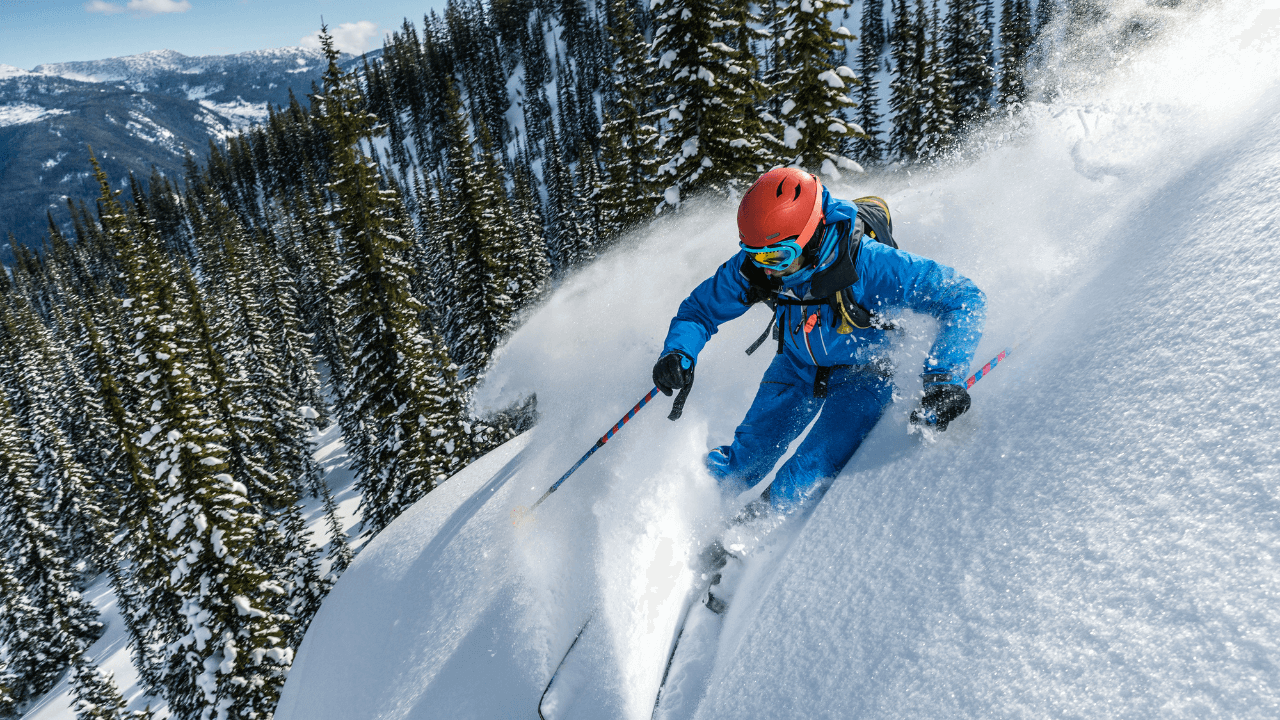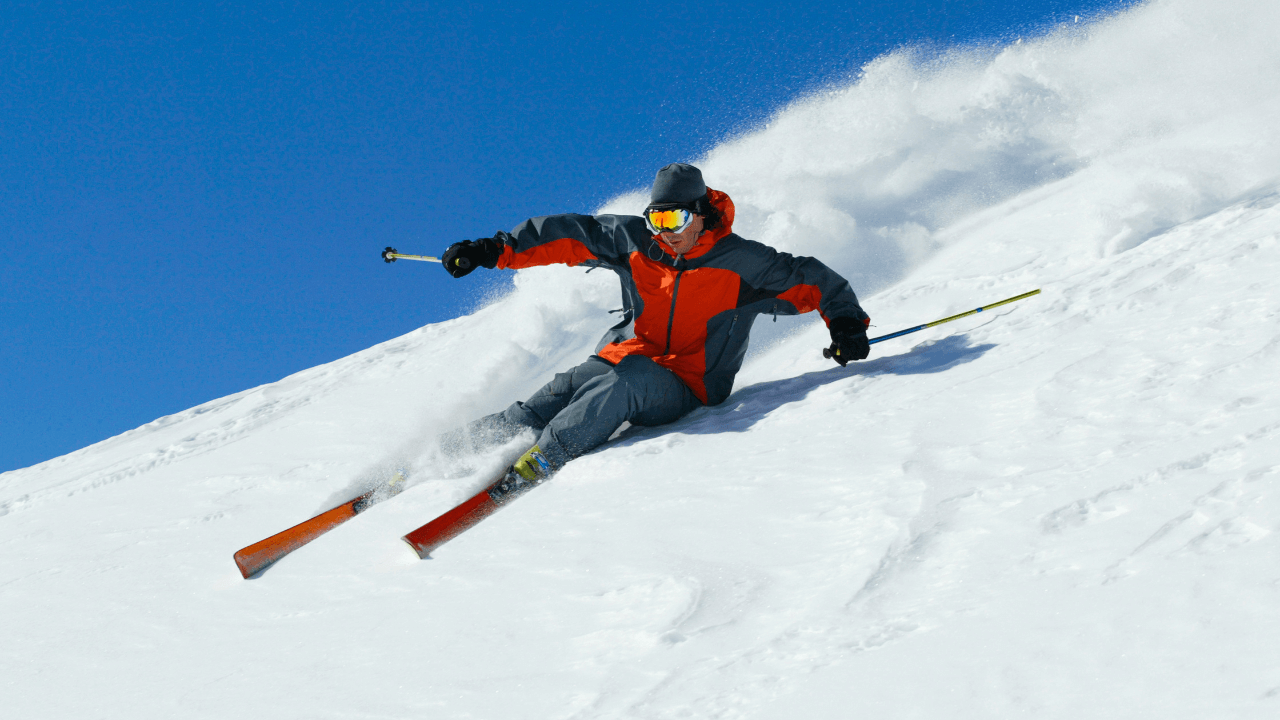Ski season is approaching fast! There’s nothing better than hitting the slopes and enjoying the fresh powder, but it’s important to stay safe while you’re doing it. Skiing can be a dangerous sport if you’re not careful, and injuries are all too common. Want to know how to avoid skiing injuries this upcoming ski season? Keep reading to discover how to keep yourself safe, healthy, and free from injury.
At Backcountry Physical Therapy, we offer sports physical therapy in Colorado Springs to help you return to your love for skiing. We know that for many outdoor athletes and enthusiasts, injury can make it difficult — if not possible — to enjoy the activities you love most. That’s why we’re here to help! Our physical therapists have the most up-to-date education to help you prevent and recover from injury.
Here are a few tips on how to avoid skiing injuries this season!

Common Ski Injuries
There are a variety of injuries that skiers can experience, but some are more common than others. For example, knee injuries are very common among skiers. The knee is a weight-bearing joint, and it’s put under a lot of stress when skiing.
When the knee is bent, as it is when skiing, it’s more vulnerable to injury. Knee injuries can include ACL tears, meniscus tears, and patellar tendonitis.
Shoulder injuries are also common among skiers. The shoulder is a mobile joint that’s used a lot when skiing, which can make it susceptible to injury. Shoulder injuries can include rotator cuff tears, dislocations, and frozen shoulder syndrome.
Wrist and hand injuries are less common than knee and shoulder injuries, but they still happen. This is usually due to falling and putting out your hands to break your fall. You can also experience wrist sprains from skiing with your wrists in an awkward position. Wrist and hand injuries can include fractures, sprains, and strains.
Tips to Prevent Ski Injuries
Now that you know some of the most common injuries, let’s talk about how to avoid skiing injuries!
1. Start Slow
If you’re new to skiing or haven’t been on the slopes in a while, it’s important to take things slowly at first. Don’t try to ski the most difficult trails right away. Build up your skills and confidence on the easier trails before moving on to the more challenging ones.
2. Use the Right Equipment
It’s important to use the right equipment when skiing. This includes having the proper-sized skis, boots, and bindings. Using ill-fitting equipment can make it more difficult to control your skis and can increase your risk of injury.
3. Warm Up Before Skiing
Just like with any other type of physical activity, it’s important to warm up before hitting the slopes. A good warm-up will help to increase your heart rate and get your muscles ready for activity.
4. Don’t Ski Alone
It’s always best to ski with a friend or group. This way, if you do experience an injury, there’s someone there to help you.
5. Listen to Your Body
If you’re feeling tired, sore, or just not quite right, it’s important to listen to your body and take a break. Pushing yourself too hard can lead to injury.

6. Be Aware of Your Surroundings
When you’re skiing, it’s important to be aware of your surroundings at all times. Pay attention to the other skiers around you and be sure to stay clear of any potential hazards.
7. Follow the Rules
Skiing is a regulated sport and there are rules in place for a reason. Be sure to follow all of the rules and regulations while on the slopes. This includes staying on designated trails, obeying all posted signs, and yielding to skiers who have the right-of-way.
8. Ski with a Certified Instructor
If you’re new to skiing or want to improve your skills, consider skiing with a certified instructor. They can help you learn proper techniques and avoid bad habits that could lead to injury.
9. Take Lessons
In addition to skiing with an instructor, taking formal lessons is also a great way to improve your skills and avoid injuries. Lessons can teach you proper technique, help you build confidence, and give you a better understanding of the sport.
10. Stay Hydrated
It’s important to stay hydrated when skiing. Be sure to drink plenty of water before, during, and after your time on the slopes.
11. Dress Appropriately
Wearing the proper clothing is essential for both comfort and safety while skiing. Be sure to dress in layers that you can easily remove if you start to overheat. Also, be sure to wear sunscreen and sunglasses or goggles to protect your skin and eyes from the sun’s harmful rays.
12. Check the Weather Conditions
Before heading out for a day of skiing, be sure to check the current weather conditions. This will help you dress appropriately and plan your route accordingly.
13. Check the Ski Report
In addition to checking the current weather conditions, it’s also a good idea to check the ski report. The ski report will give you information on things like trail closures, avalanche warnings, and other hazards.
14. Use Proper Technique
When skiing, it’s important to use proper technique. This includes keeping your knees bent, using your poles for balance, and keeping your weight evenly distributed. Using proper technique will help you maintain control and avoid injuries.
15. Take Breaks as Needed
If you start to feel tired, it’s important to take a break. Skiing is a physically demanding sport and pushing yourself too hard can lead to injury.

16. Stay Within Your Ability Level
When choosing a trail, be sure to pick one that’s within your ability level. If you try to ski a trail that’s too difficult for your skill level, you’re more likely to get injured.
17. Wear the Proper Gear
In addition to wearing the proper clothing, it’s also important to wear the proper gear when skiing. This includes things like helmets, goggles, and gloves. Wearing the proper gear will help to protect you in the event of a fall.
18. Be Cautious in Terrain Parks
Terrain parks can be fun, but they can also be dangerous. Be sure to only attempt jumps and tricks that you’re comfortable with and always use caution when landing.
19. Inspect Your Equipment Regularly
It’s important to inspect your equipment regularly to ensure that it’s in good working condition. This includes things like checking the bindings on your skis and making sure your helmet is secure.
20. Respect the Mountain
Skiing is a privilege — not a right. Be sure to respect the mountain by obeying all rules and regulations. This will help to ensure that everyone can enjoy the slopes safely.
Skiing is a great way to enjoy the outdoors and get some exercise. However, it’s important to ski safely in order to avoid injuries. Follow these tips to stay safe on the slopes!
Recover from Skiing Injuries with Backcountry Physical Therapy
Skiing is one of the most popular winter sports. It doesn’t get better than skiing in the Rocky Mountains. However, if you’re not skiing correctly, you’re at a higher risk for injuries. These tips on how to avoid skiing injuries will keep you safe all ski season long!
At Backcountry Physical Therapy, we’ve treated many skiing injuries and can help you get back on the slopes safely. Our physical therapists will work with you to get to the root of your problem. No matter if you have a knee or wrist injury, we can help! With performance physical therapy services from Backcountry Physical Therapy, you’ll get back to what you love pain-free! Ready to recover from pain or discomfort? Contact our team to get started!


